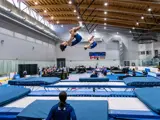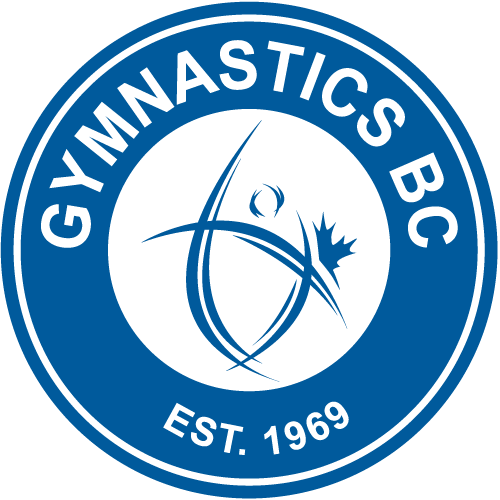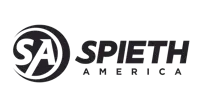Trampoline – any rebounding apparatus that uses any form of bed-type surface, attached to a frame by springs or bungee cords; this includes, but is not limited to, competition trampolines, mini-trampolines, double-mini-trampolines, fast tracks, t-trainers and in-ground trampolines.
Trampoline Insurance

Including Drop-in Programs
1. GymBC Public Access Programming Trampoline Requirements
- The GymBC Member Club posts, reviews and follows the Trampoline Rules (Including GymBC’s Poster) listed below with the participants prior to and during the use of trampoline devices;
- this should include a verbal explanation and visual review of the GymBC Trampoline Rules Poster with all participants.
- The GymBC Member Club ensures that all parents of participants and participants (if 12+) complete GymBC’s Assumption of Risks/Waiver of Liability Document prior to paying for registration in their program.
- The GymBC Member Club ensures that the Trampoline devices are maintained to the standards of manufacturers and that they are set up safely in the Member Club’s facility (with sufficient space between equipment to ensure safe usage).
Download Trampoline Rules Poster 1 Download Trampoline Rules Poster 2
Trampoline Devices
Acceptable Trampoline Devices Include
- competition trampolines
- mini- trampolines
- double-mini-trampolines
- fast-tracks
- t-trainers
- in-ground trampolines
Unacceptable Trampoline Devices Include
- backyard trampolines from ANY manufacturer
- home-made trampoline devices
Birthday Parties, Field Trips & Drop-in Programs
Trampoline Rules For Public Access Programming
- Active Start Participants (under age 6) are not allowed on trampoline devices.
- One person on the trampoline device at all times (including parent and care providers/aids).
- All trampoline device activities are limited to the content of skills in Levels 1-4 of CanJump:
- No flips or somersaults are allowed (no inversions/flipping movements).
- No front tuck, back tuck, or penny rolls (back/front drop + pullover), etc.
- No equipment such as balls, hoops or any other items are ever allowed on trampoline devices.
- Proper use of trampoline devices is required – in particular when multiple pieces of equipment are being used together:
- Safely use Trampoline device into foam pit, meaning:
- before using pit, staff must ensure that safety padding and foam are appropriately in place – including extra mats on top of the frame of the trampoline between the bed and the pit;
- ensure landing zone in the pit is clear of other people and obstacles;
- only feet first landings are permitted; and
- no inversions are allowed
- Do not use any trampoline device and other devices/equipment simultaneously (walls, tramp to tramp, etc.)
- Participants should carefully step on and off of equipment (no jumping off).
- Safely use Trampoline device into foam pit, meaning:
- A Gymnastics Foundations (GF) Trampoline certified coach (or a GF Tramp Trained coach supervised by a GF Tramp certified coach) must always be present directly supervising the participant(s).
- The GymBC coaching ratio of 1 coach to no more than 10 athletes must be followed at all times.
- If certified coaches and coaching ratios are not met, trampoline devices must be not used.
Including Week-long Camps
2. GymBC Structured Recreational Trampoline Programming Requirements
- NCCP Gymnastics Foundations Trampoline Trained, indirectly supervised by an Artistic Competition 1 (or Artistic Level 2) Certified coach (or higher) or by a NCCP Foundations Trampoline Certified coach (or higher).
- The supervising coaches may coach their own group while supervising, but they must be aware and able to observe the supervised groups (coach and participants) on the trampoline devices.
3. GymBC Competitive Trampoline Program Requirements
Competitive Trampoline Gymnastics is a structured activity that begins with the CanJump curriculum and progresses to more advanced skills. Safety protocols (spotting, throwing mats, etc.) are expected to be implemented based on the level and needs of the athletes.
Competitive Trampoline Gymnastics Activities
A coach must be NCCP Level 2 Trampoline or higher (or Competition 1 Trampoline or higher) Certified providing direct coaching (one-on-one) to a competitive member.
Competitive Artistic Trampoline Activity
A coach must be NCCP Artistic Competition 1 Certified or higher, providing direct coaching (one-on-one) to a competitive artistic member.
4. Other Programs
A user group (such as skiers, hockey players, divers, etc.) which intends to rent a member club facility in order to conduct cross-training activities must request permission from GymBC to do so. Additionally, that user group must complete the Request for User Group to Conduct Cross-Training Activities, and provide their own coaches.
The user group MUST provide proof of $5 M in liability coverage which includes adding Gymnastics BC and the member club as additional insureds on their insurance policy.
The member club must then submit the user group request to GymBC prior to the first training and provide a ‘gym attendant’. GymBC member club coaches are not permitted to deliver any instruction during facility rentals.
Recreational Parkour / Cheerleading: Use of trampoline devices is NOT permitted.
Definitions
When an individual has completed all required training for a context.
A coach who has completed all required training (NCCP theory and technical workshops/courses) for any context.
Example #1: To be recognized as a “trained” NCCP Gymnastics Foundations coach, you must complete introduction, theory, and a discipline-specific component.
Example #2: To be recognized as a “trained” NCCP Level 2 Trampoline Coach, you must complete both the NCCP Level 2 Technical course and Competition 1 Theory components.
When an individual has completed all evaluation requirements for a context.
Example #1: A NCCP Gymnastics Foundation “in training” coach has completed some of the required components (introduction, theory or discipline-specific components).
Example #2: A NCCP Gymnastics Foundations “trained” coach has completed the 3 components: introduction, theory and a discipline-specific components.
Example #3: A NCCP Level 2 Trampoline “trained” coach has completed the Level 2 Technical course and Competition 1 Theory components.
Example #4: To be Certified, an NCCP Level 2 Trampoline coach must have completed the Level 2 Technical course, Competition 1 theory component and have submitted their NCCP Level 2 Trampoline Practical form which requires a minimum of 150 hours of coaching Level 2 trampoline, completed after attendance at a Level 2 Technical Trampoline course. Until December 31, 2019, a trained NCCP Level 2 Trampoline coach will be allowed to indirectly supervise trampoline activities (while they are completing themselves the 150 practical hours).
Once the Gymnastics Canada Competition 1 Trampoline course is fully operational, the Level 2 trampoline certification will be replaced by the Competition 1 Trampoline certification.
To be certified, a Competition 1 Trampoline coach will have to complete: Competition 1 Trampoline course AND Competition 1 Trampoline evaluation, completed by a Competition 1 Trampoline Coach Evaluator.
A trained or certified coach is within close proximity and instructing their group of athletes.
In the context of the new trampoline insurance limitations, an NCCP Level 2 Trampoline certified coach must be present in the gym if any trampoline devices are being used. NCCP Level 2 trampoline certified coaches are permitted to coach their own group. If NCCP Level 2 trampoline certified coaches are supervising other groups, they must be aware and able to observe the groups (including the group’s coach and participants) on trampoline devices.
Regularly-scheduled programs occurring over multiple weeks or multiple days in one week that teach progressive skill development.
A trained or certified coach is within close proximity and instructing their group of athletes.
Gym rentals and lease contracts with user groups for facility use (not program services) require the following:
- a copy of the user group’s Certificate of Insurance stating a minimum of $5 million in liability coverage, and listing Gymnastics BC and the full member club as additional insured is required and must be provided directly to both the GBC full member club and Gymnastics BC prior to facility use.
- The club must provide a ‘gym attendant’ (Gymnastics Foundations or Level 1 certified, 19 years or older, and valid GBC approved first aid certification) who is a current member of the club, to ensure that gym rules are being properly followed
A GymBC associate membership is for organizations already covered under a corporate insurance plan. This organization attends a structured field trip program over multiple weeks or multiple days in one week, for a maximum of 8 visits per participant. Through the activity of gymnastics, this structured field trip must teach progressive skill development in order to help develop fundamental movement skills. Club coaches are permitted to deliver instruction, providing all requirements are met.
Examples of such activities include (but are not limited to):
School groups
- Day cares
- All public recreation departments
- Community centres
- YM/YWCA’s
- Special needs groups












